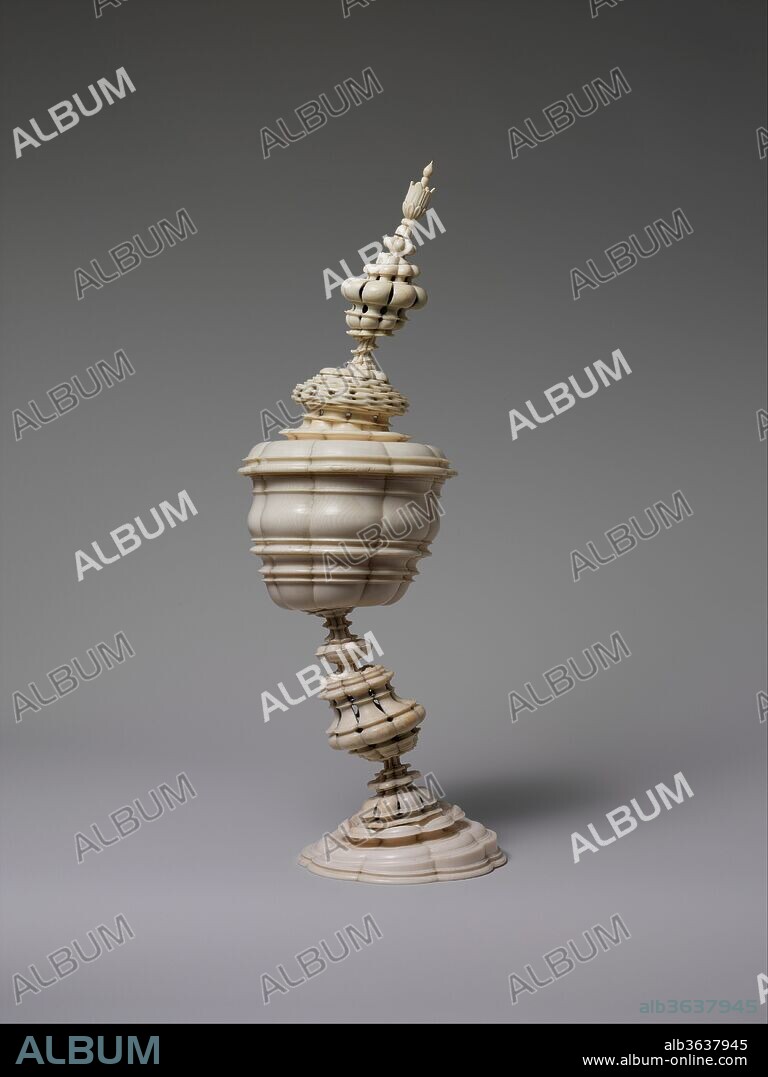alb3637945
Standing cup

|
Ajouter à une autre Lightbox |
|
Ajouter à une autre Lightbox |



Avez-vous déjà un compte? S'identifier
Vous n'avez pas de compte ? S'inscrire
Acheter cette image.
Sélectionnez l'usage:

Titre:
Standing cup
Légende:
Voir la traduction automatique
Standing cup. Culture: German, Nuremberg. Dimensions: Overall: 14 × 5 × 4 1/4 in. (35.6 × 12.7 × 10.8 cm). Maker: Possibly by workshop of Lorenz Zick (1594-1666); Possibly by workshop of Stephen Zick (died 1715). Date: 17th century.
The technique of forming objects on a lathe, or turning, reached a high degree of complexity in the Renaissance and Baroque eras, when French, Italian, and Central European workshops produced paper-thin hollowed-out shapes from single blocks of ivory. Clerics and noblemen embraced turning as a hobby. Among the rulers who collected masterpieces of turning for their Kunstkammern and practiced the art themselves were the Holy Roman Emperors Maximilian II (r. 1564-76), Rudolf II (r. 1576-1612), and Ferdinand III (r. 1619-37). The eccentric form of this cup exemplifies Mannerist taste in Central Europe, though the most challenging aspect of its creation was concocting the lacy hollows that form the stem and spire.
Technique/matériel:
MARFIL
Musée:
Metropolitan Museum of Art, New York, USA
Fabricant:
Possibly by workshop of Lorenz Zick (1594-1666) • Possibly by workshop of Stephen Zick (died 1715)
Crédit:
Album
Autorisations:
Taille de l'image:
3170 x 4226 px | 38.3 MB
Taille d'impression:
26.8 x 35.8 cm | 10.6 x 14.1 in (300 dpi)
Mots clés:


 Pinterest
Pinterest Twitter
Twitter Facebook
Facebook Copier le lien
Copier le lien Email
Email
